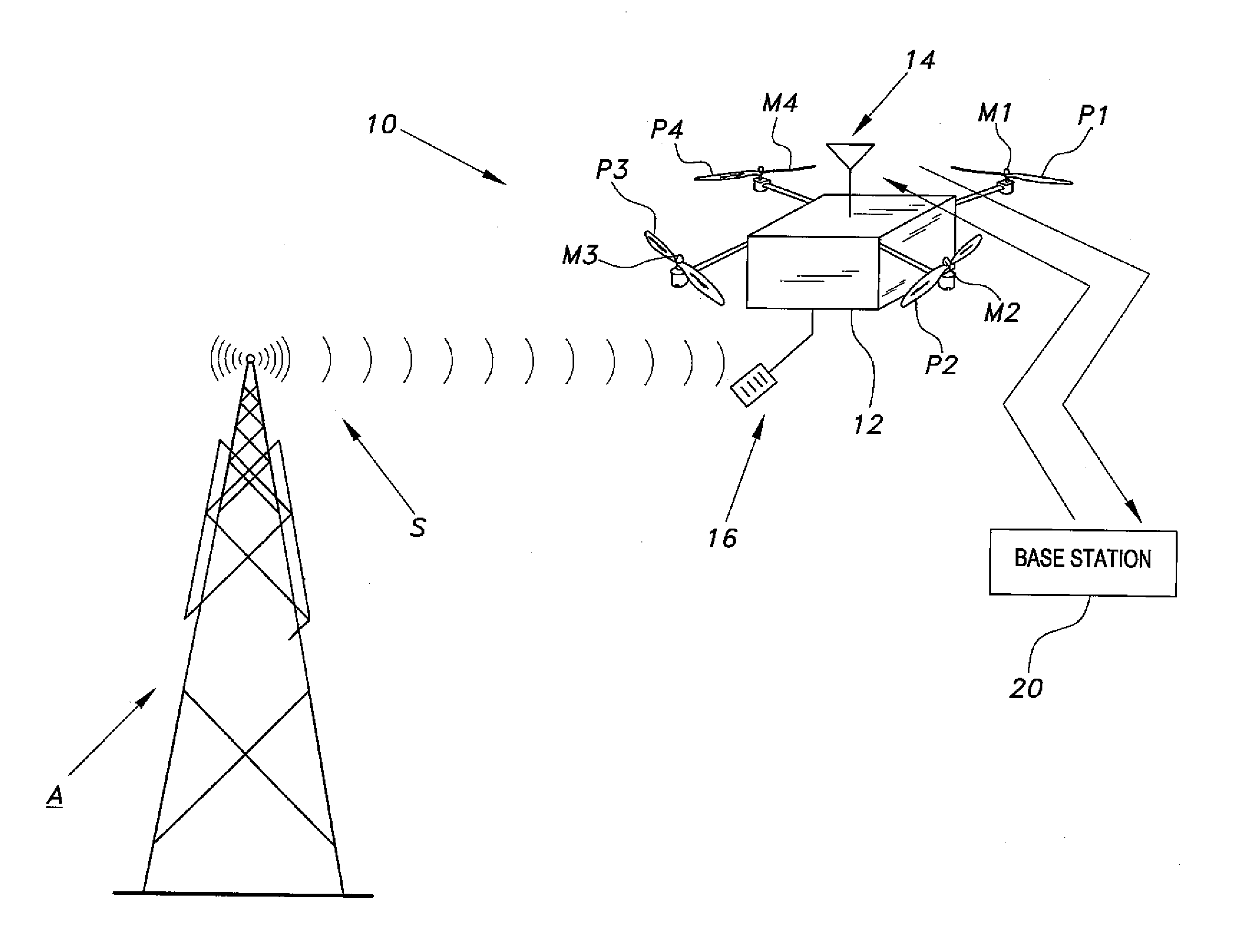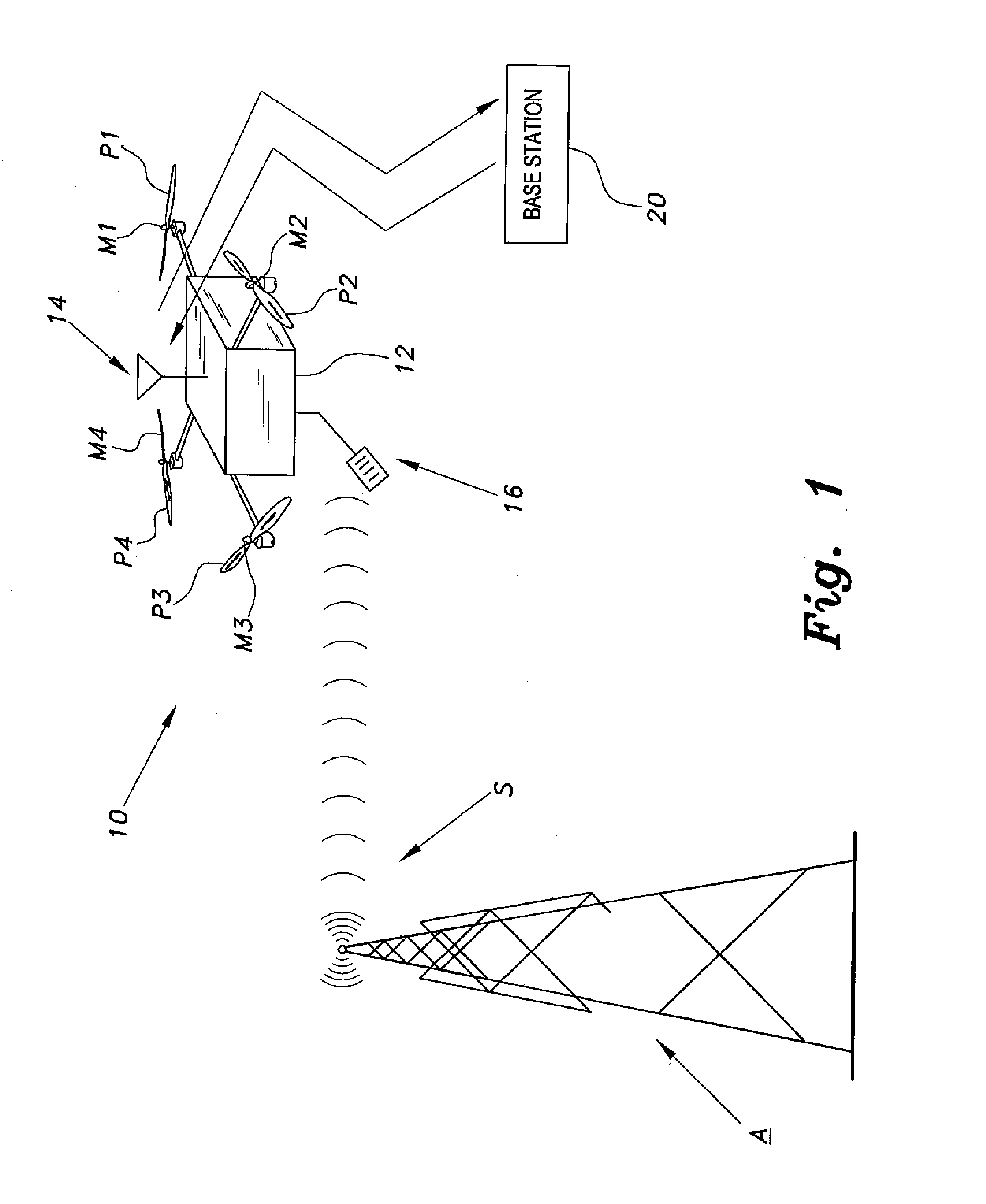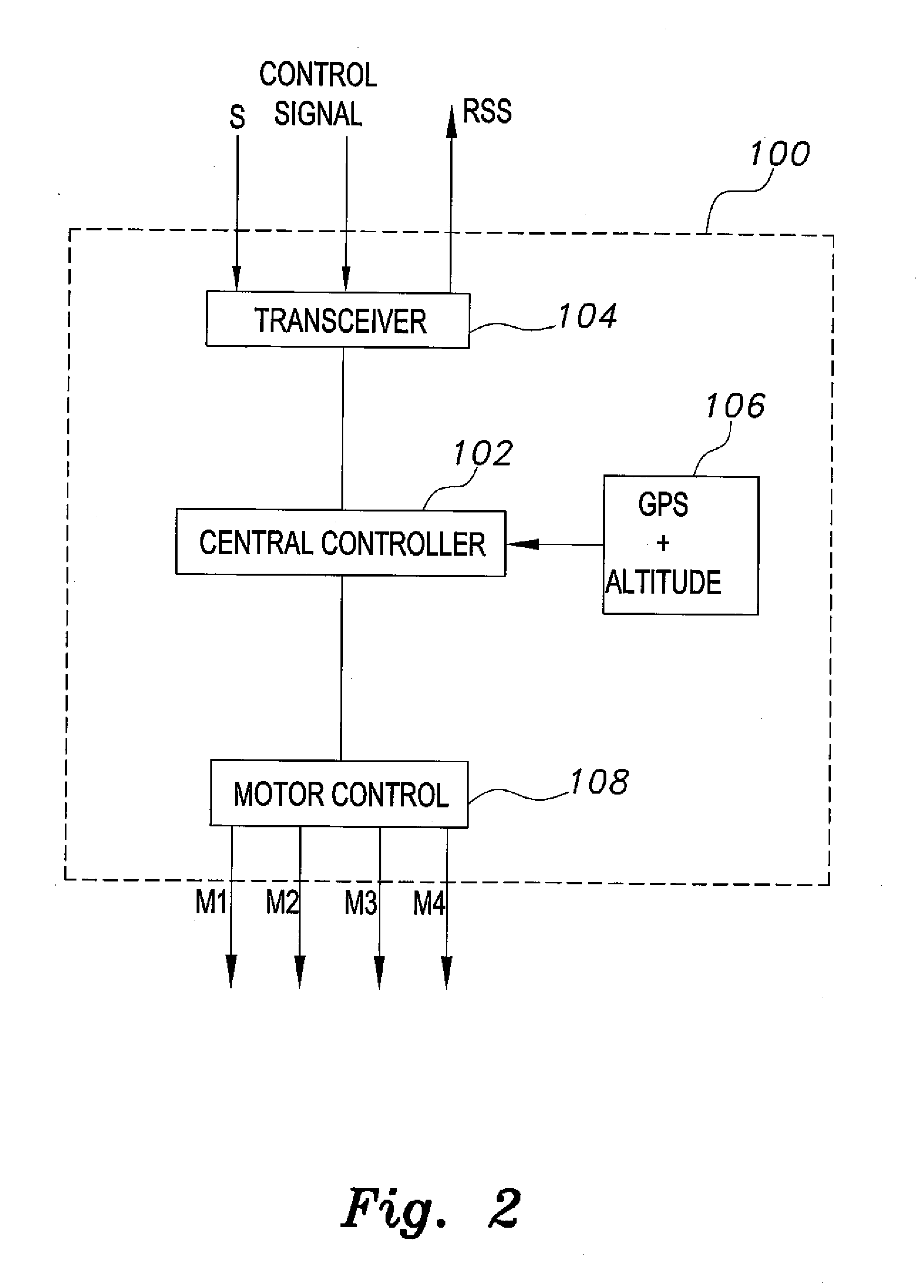Unmanned aerial vehicle for antenna radiation characterization
a technology of unmanned aerial vehicles and antenna radiation, applied in the field of antenna radiation pattern characterization, can solve the problems of only generating a two-dimensional approximation of the true three-dimensional radiation pattern, and not capturing the effect of its surroundings on its actual performan
- Summary
- Abstract
- Description
- Claims
- Application Information
AI Technical Summary
Benefits of technology
Problems solved by technology
Method used
Image
Examples
Embodiment Construction
[0014]The unmanned aerial vehicle (UAV) for antenna radiation characterization 10 (“UAV 10”) is an unmanned aerial vehicle adapted for sensing and mapping received signal strength of a signal transmitted from an antenna for three-dimensional characterization of the antenna signal, such as can use a radio frequency (RF) type system. Embodiments of the UAV for antenna radiation characterization provide an antenna radiation pattern measurement system that utilizes a UAV, such as the UAV 10, to fly in the area around a stationary antenna and collect the data to determine the radiation characteristics and a shape of the stationary antenna. As shown in FIG. 1, the unmanned aerial vehicle for antenna radiation characterization 10 is a conventional unmanned aerial vehicle having a transceiver antenna 14, for communicating with a base station 20, and a signal strength antenna 16 for sensing and receiving a signal S transmitted from antenna A.
[0015]In FIG. 1, the unmanned aerial vehicle for a...
PUM
 Login to View More
Login to View More Abstract
Description
Claims
Application Information
 Login to View More
Login to View More - R&D
- Intellectual Property
- Life Sciences
- Materials
- Tech Scout
- Unparalleled Data Quality
- Higher Quality Content
- 60% Fewer Hallucinations
Browse by: Latest US Patents, China's latest patents, Technical Efficacy Thesaurus, Application Domain, Technology Topic, Popular Technical Reports.
© 2025 PatSnap. All rights reserved.Legal|Privacy policy|Modern Slavery Act Transparency Statement|Sitemap|About US| Contact US: help@patsnap.com



